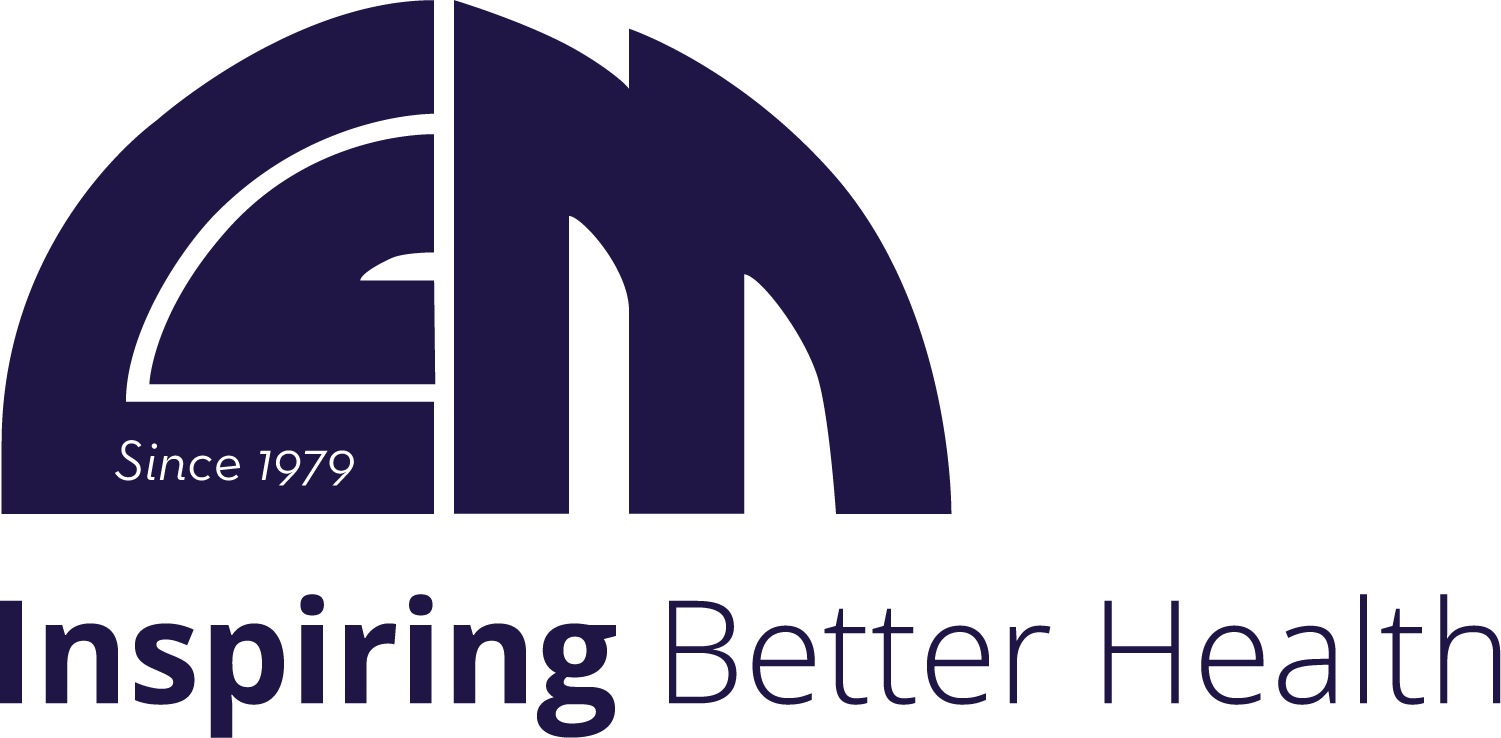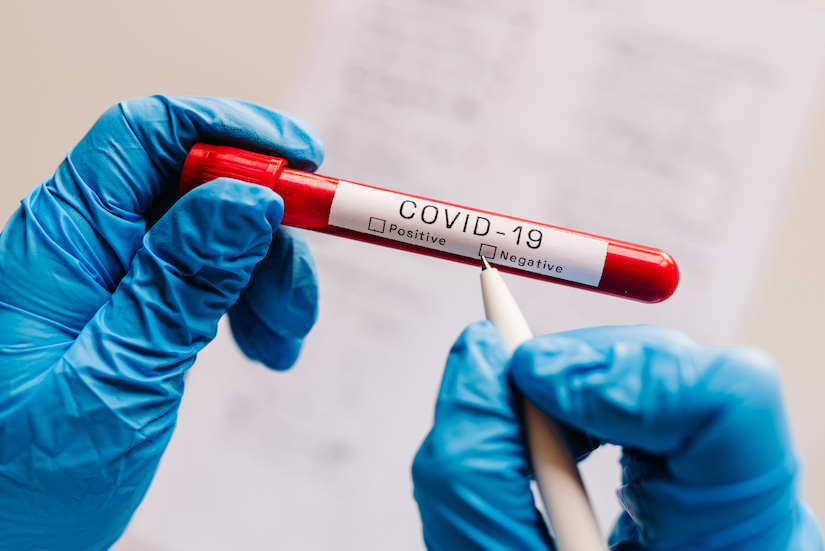Welcome
This is the first issue of the first volume of our series of newsletters intended to appear at timely intervals to take advantage of important developments.
Updates in Neurology presents the seasoned observations, opinions, recognition and management of Neurology. The aim of this Newsletter is to bring to the physician’s doorstep Updates in Neurology in a concise and friendly manner. This issue is dedicated to the 2022 Annual Meeting of the American Academy of Neurology (AAN) which was held April 2-7 in Seattle, USA and offered neurologists and neuroscience professionals top-tier education opportunities in nearly every neurology topic imaginable and the most cutting-edge science and therapeutics. The AAN Annual Meeting strives to promote the highest quality patient-centered neurologic care and focuses on to be indispensable to neurologists. It aims to demonstrate and assert the value of neurology to policymakers and other major stakeholders and expand the neurology workforce to meet future needs for patient care.

2022 Annual Meeting - American Academy of Neurology
Multiple Sclerosis Management
- Machine Learning-Based Prediction of New Multiple Sclerosis Lesion Formation
- Ketogenic Diet as a Strategy for Improved Wellness and Reduced Disability in Relapsing Multiple Sclerosis
- Mediterranean Diet Score is Associated with Disability and Brain Atrophy in Multiple Sclerosis
COVID-19 and Multiple Sclerosis
Editorial Office:
CCM International P.O. Box 61145, 5 Konitsis str Maroussi, Athens 15125 Greece. Tel.: (+30) 210 6146560Fax: (+30) 210 8061765 Email: info@groupccm.com
Editorial Board
Dr. K. Abbasi, Editor, Journal of the Royal Society of Medicine, London, UK
Dr. N. Afeiche, MD, A.B.O.S., American University of Beirut, Lebanon
Dr. K. Balaraj, Consultant Radiooncology, Tawam Hospital, Al Ain, UAE
Dr. K. O. Bawakid, Consultant Family Physician, Head of Training & CME Program, PHC, Jeddah, Supervisor of the Saudi Society of Family & Community Medicine, Jeddah, KSA
Dr. C. Kalayci, Department of Gastroenterology, Florence Nightingale Hospital, Istanbul, Turkey
Dr. E. G. Karam, M.D. Professor & Head, Dept. of Psychiatry & Clinical Psychology, St.George Hospital University Medical Center, Beirut, Lebanon
Dr. A. Nassrallah, MD, FACC., Clinical Associate Professor, Internal Medicine for Cardiology, American University of Beirut, Lebanon
Dr. N. S. El Saghir, MD, FACP, Professor of Clinical Medicine/Hematology-Oncology and Director, Breast Center of Excellence, Naef K. Basile Cancer Institute, American University of Beirut Medical Center, Lebanon
Dr. D. Sideris, Professor of Cardiology, School of Medicine, University of Ioannina, Greece Volume 1 No1 July 2022
Managing Editor & Marketing Consultant
Mr. G Cherfan, CCM International, Athens, Greece
Deputy Managing Editor
Mrs. Isabelle Boghossian, CCM International, Athens, Greece
Head of Publication
Mr. Alain Berbari, CCM Middle East, Beirut, Lebanon
Production Coordinator
Mrs. Lara Bassil, CCM Middle East, Beirut, Lebanon
CCM/SAN/23246 www.groupccm.com
Multiple Sclerosis Management
Machine Learning-based Prediction of New Multiple Sclerosis Lesion Formation

Source: Machine Learning-Based Prediction of New Multiple Sclerosis Lesion Formation Using Radiomic Features from Pre-Lesion Normal Appearing White Matter (S26.009). Bastien Caba, Arie Gafson, Aurélien Lombard, Dawei Liu, Alexandre Cafaro, Enzo Battistella, Rodrigo Perea, Elizabeth Fisher, Nathalie Franchimont, Douglas L. Arnold, Colm Elliott, Nikos Paragios, Shibeshih Belachew. Neurology May 2022, 98 (18 Supplement) 1687
New lesions on T2-weighted brain MRI of patients with multiple sclerosis (MS) are a marker of inflammatory disease. Evidence suggests that abnormalities exist within the normal-appearing white matter (NAWM) prior to lesion formation, however conventional imaging methods cannot detect these abnormalities.
A machine learning program appears to “see” developing lesions in the brains of people with MS that are invisible to the human eye
as Caba et al reported during the 2022 meeting in their presentation entitled “Machine Learning- Based Prediction of New Multiple Sclerosis Lesion Formation Using Radiomic Features from Pre-Lesion Normal Appearing White Matter (S26.009)”. The algorithm may help physicians assess the short-term and long-term prognosis for the condition, the researchers said.
Brain T1- and T2-weighted MRIs from ADVANCE (1,512 patients with relapsing-remitting MS, NCT00906399) and ASCEND (886 patients with secondary progressive MS, NCT01416181) trials were analysed. Cubic patches of 15 mm edge were sampled from the NAWM of baseline scans. Patches co-locating with a future lesion at 48 weeks were labelled “positive” patches, while those not associated with a future lesion in spatially matched white matter were labelled “negative”. Intensity-based radiomic features were extracted from the core and periphery of each patch, yielding 372 radiomic features per patch. Linear and non-linear robust feature selection was performed to identify a compact signature of textural biomarkers reflective of tissue state. ADVANCE was used for training/validation; ASCEND for testing.
Feature selection yielded 40 features, among which 22 were core-based and 18 were periphery-based; 18 are T1-based, 22 are T2-based. The classification framework reached 66.4% balanced accuracy, 66.5% precision, 66.0% sensitivity, 66.8% specificity, and 72.6% AUC on the validation set. The corresponding testing set metrics in the ASCEND cohort were 64.6%, 63.7%, 68.0%, 61.2%, and 71.4%.
“These results further inform our understanding of the nature of lesion formation in multiple sclerosis, which seemingly arises from areas of normal-appearing white matter that are in fact abnormal," the authors concluded. “In the context of MRI, machine learning has the potential to reveal the pathological state of brain tissue integrity beyond what is visible to the human eye. We were able to identify subtle patterns of brain MRI signal intensities, which are reflective of a white matter tissue state that precedes new lesion formation," they said.

Ketogenic Diet as a Strategy for Improved Wellness and Reduced Disability in Relapsing Multiple Sclerosis

Source: Ketogenic Diet as a Strategy for Improved Wellness and Reduced Disability in Relapsing Multiple Sclerosis (S40.007) J. Nicholas Brenton, Diana Lehner-Gulotta, Emma Woolbright, Rachael Coleman, Mark Conaway, Brenda Banwell, A. G. Christina Bergqvist, Myla Goldman. Neurology May 2022, 98 (18 Supplement) 622
Dietary changes impact human physiology and immune function and have potential as therapeutic strategies in MS. Ketogenic diets mimic a fasting state and have been shown to impact immune regulation. A ketogenic diet (KD), which primarily consists of foods like meat, fish, eggs, heavy cream, butter, oils and non-starchy vegetables like pea pods, carrots, broccoli and peppers, may be safe for people with multiple sclerosis (MS). That is according to the presentation entitled “Ketogenic Diet as a Strategy for Improved Wellness and Reduced Disability in Relapsing Multiple Sclerosis”. The aim of this preliminary study was to assess the safety and tolerability of a ketogenic diet (KD) in patients with relapsing MS and secondarily explore the impact on patient-reported, laboratory and clinical outcome metrics.
The preliminary study also found people with MS may experience less fatigue and depression and report an improved quality of life while on the diet.
“A ketogenic diet, which is high in fats, adequate in protein, and low in carbohydrates, allows the body to utilize fat as its primary source of energy instead of sugars, thus mimicking a fasting state,” said the study author Dr. J. Nicholas Brenton.
The study enrolled 65 people diagnosed with relapsing- remitting MS into a 6-month prospective KD intervention. Adherence to diet was monitored with the use of daily urine ketone testing. At baseline, patient-reported fatigue, depression and quality of life scores were obtained in addition to fasting adipokines and pertinent MS-related clinical outcome metrics. Baseline study metrics were repeated at 3 and/or 6 months on KD.
Participants were instructed to consume two to three ketogenic meals per day consisting of one to two servings of low-carbohydrate proteins such as eggs, fish or meat alongside two to four tablespoons of fat, such as butter, oil, avocado, ghee or heavy cream, and one to two cups of non-starchy vegetables such as cucumbers, leafy greens or cauliflower. Snacks were also allowed as long as participants followed the maximum daily carbohydrate allowance of 20 grams. Adherence to the diet was monitored by daily urine tests to measure ketones, a metabolite produced by the body when it is burning fats.
A total of 83% of participants adhered to the KD for the full study period. Subjects exhibited reductions in fat mass from baseline to 6 months on-diet (41.3 ± 16.1 vs 32.0 ± 14.1 kg, p<0.001) and a significant decline in fatigue and depression scores. MS quality of life physical (67 ± 16 vs 79 ± 12, p<0.001) and mental (71 ± 17 vs 82 ± 11, p<0.001) composite scores improved on diet. Improvements were noted in Expanded Disability Status Scale (EDSS) scores (2.3 ± 0.9 vs 1.9 ± 1.1, p<0.001), 6-minute walk (1,631 ± 302 vs 1,733 ± 330 feet, p<0.001), and 9-hole peg test (21.5 ± 3.6 vs 20.3 ± 3.7 seconds, p<0.001). Fasting serum leptin was lower (25.5 ± 15.7 vs 14.0 ± 11.7 ng/mL, p<0.001) and adiponectin was higher at 6 months on KD (11.4 ± 7.8 vs 13.5 ± 8.4 mcg/mL, p=0.002).
A limitation of the study was the lack of a control group of people with MS who consumed their regular, non-ketogenic diet.
This study provided evidence that a ketogenic diet may indeed be safe and beneficial, reducing some symptoms for people with MS, when used over a six-month period. However, more research is needed because there are potential risks associated with ketogenic diets, such as kidney stones, digestive issues and nutrient deficiencies.
Mediterranean Diet Score is Associated with Disability and Brain Atrophy in Multiple Sclerosis

Source: Mediterranean Diet Score is Associated with Disability and Brain Atrophy in Multiple Sclerosis (S14.002) Ilana Katz Sand, Kathryn Fitzgerald, Tali Sorets, Sarah Levy, James Sumowski. Neurology May 2022, 98 (18 Supplement) 1456
Researchers found that greater adherence to a Mediterranean diet was associated with better functioning as measured on the Multiple Sclerosis Functional Composite (MSFC) instrument and less cerebral atrophy on MRI. The study authors said that their findings suggest the possibility of a neuroprotective mechanism with the Mediterranean diet, but added that long-term studies and interventional clinical trials are needed to further explore that possibility.
A significant relationship between Mediterranean diet score and MS-related disability was established in study findings presented at the 2022 American Academy of Neurology (AAN) Annual Meeting, entitled “Mediterranean Diet Score is Associated with Disability and Brain Atrophy in Multiple Sclerosis”.
Mediterranean diet score is associated with structural brain metrics and clinical outcomes in cognitive aging, suggesting potential neuroprotection, the researchers wrote. The researchers noted that they had previously observed a relationship between a similar score (MIND, Mediterranean-DASH Intervention for Neurodegenerative Delay) and thalamic volume in early MS.
“The MS community has a high interest in whether diet can act as a disease-modifier,” the researchers explained.
This study sought to evaluate relationships between Mediterranean diet score and disability in MS.
The study of a representative clinical cohort included 500 patients with MS (70% women; aged 43.8±11.6 years) who completed the MEDAS and the MSFC evaluation of cognition, upper extremity coordination, and gait speed. The researchers measured third ventricle width (TVW) on axial T1 images from clinical MRIs as a validated estimate of cerebral atrophy. Multiple regressions investigated the independent contribution of MEDAS to MSFC and TVW controlling for age, sex, race, ethnicity, socioeconomic status, BMI, physical exercise, sleep disturbance, and a cardiovascular risk (CVR) index (hypertension, diabetes, hyperlipidemia, cardiac conditions, smoking).
The patients completed the MEDAS and the MSFC evaluation of cognition, upper extremity coordination, and gait speed. The authors measured TVW on axial T1 images from clinical MRIs as a validated estimate of cerebral atrophy. Multiple regressions investigated the independent contribution of MEDAS to MSFC and TVW controlling for age, sex, race, ethnicity, socioeconomic status, BMI, physical exercise, sleep disturbance, and a cardiovascular risk (CVR) index (hypertension, diabetes, hyperlipidemia, cardiac conditions, smoking).
Assessments conducted by the researchers found that higher MEDAS independently predicted better MSFC (rp=0.200, p <.001) and lower TVW (less atrophy; rp=-0.122, p =.007). MEDAS was a “much better predictor” of both MDFC and TVW than were BMI, exercise, sleep disturbance, or CVR, the authors wrote. The link between MEDAS and MSFC was strongest in progressive disease. The relationship between higher MEDAS and better MSFC was partially mediated through lower TVW (rp : 0.200 to 0.167, Ps<001), “consistent with the notion that MEDAS preserves functional outcomes by supporting brain maintenance,” the authors noted.
The authors believe that a "significant association" exists between Mediterranean diet score and MS-related disability, after controlling for important potential confounders. The strength of the relationship in progressive disease and partial mediation by third ventricle width suggests the possibility of a neuroprotective mechanism.”
COVID-19 and Multiple Sclerosis
Varying Rates of SARS-CoV-2 Vaccine Response are Reported in People with Multiple Sclerosis

Source: Immune responses to SARS-CoV-2 vaccination in multiple sclerosis: a systematic review and meta-analysis (S5.007). Grace Gombolay, Monideep Dutt, William Tyor. Neurology May 2022, 98 (18 Supplement) 181
Gombolay et al presented their study entitled “Immune Responses to SARS-CoV-2 Vaccination in Multiple Sclerosis: A Systematic Review and Meta-Analysis”.
The authors performed a meta-analysis and systematic review of patients with MS (pwMS) and rates of immune response to SARS-CoV-2 vaccines by disease-modifying therapy (DMT) and by vaccine type from manuscripts from January 1, 2019 until October 1, 2021. Data from publications reporting on antibody or cellular vaccine response data in pwMS were included. Antibody response was defined as positive or negative, based upon assay cutoffs. Immune response to prior COVID infections were excluded. Descriptive statistics was performed using STATA (statistical software for data science).
The authors included 16 out of 589 articles and 186 healthy controls and 1,239 pwMS. A total of 99% of healthy controls (184/186) presented protective antibody responses in comparison to 100% untreated pwMS (169/169), 99% pwMS on beta-interferons (79/80), and 100% pwMS on glatiramer acetate (39/39), dimethyl fumarate (116/116), natalizumab (127/127), alemtuzumab (19/19), and teriflunomide (72/72). An antibody response was detected in 93% of pwMS on cladribrine (69/74), 70% of sphingosine 1-phosphate modulators (S1PM) (108/155) and 46% percent of pwMS on anti-CD20 treatments. PwMS on rituximab had a higher antibody response (23/37 = 62%) as compared to ocrelizumab (107/205 = 39%), with unknown anti-CD20 in 76. The authors attributed this difference to the vaccination received (mRNA-1273 vs BNT162b2) as mRNA-1273 results in higher antibodies. However, 46/49 (94%) on anti-CD20 had T cell responses to SARS-CoV-2 vaccines.
These results drove the researchers to the conclusion that the humoral responses appear to be blunted in S1PM and anti-CD20 treatments; however, the majority develop cellular responses. Further investigation into how DMT affects immune response is needed.

Substantial Increase in the Risk of SARS-CoV-2 Infection among Patients on Ocrelizumab or Fingolimod Compared to the General Population

Source: Impact of Multiple Sclerosis Disease-Modifying Therapies on Effectiveness of SARS-Cov-2 Vaccines: A Longitudinal Total Population Study of National Health Service (NHS) England (S5.008). Afagh Garjani, Sameer Patel, Graham R. Law, Dhiren Bharkhada, Waqar Rashid, Alasdair Coles, Nikos Evangelou. Neurology May 2022, 98 (18 Supplement) 3321;
While real-world data in the general population continue to show that SARS-CoV-2 vaccination is effective in preventing infections, it is still unclear whether it offers the same level of protection to multiple sclerosis (MS) patients receiving immunomodulatory disease-modifying therapies (DMTs).
Garjani et al presented their study entitled “Impact of Multiple Sclerosis Disease-Modifying Therapies on Effectiveness of SARS-Cov-2 Vaccines: A Longitudinal Total Population Study of National Health Service (NHS) England” in which they compared the risk of SARS-CoV-2 infection before and after mass vaccination among patients with multiple sclerosis (pwMS) taking different DMTs compared to the general population (GP). In a previous study, the same authors had shown that
SARS-CoV-2 vaccines offer less protection against infection to patients taking ocrelizumab or fingolimod, who have an impaired immune response to vaccines, than the general population
(Garjani A, et al. Mult Scler Relat Disord. 2022).
National Health Service (NHS) England and NHS Improvement (NHSE/I) hold prescribing data on all MS DMTs in England. Public Health England (PHE) collected data on all SARS-CoV-2 tests in England. In this study, datasets of NHE/I and PHE were merged to estimate the monthly rates of SARS-CoV-2 infections in the entire population of pwMS taking DMTs in England. Publicly available data were used for the same analysis in the GP. The relative risk of SARS-CoV-2 infection among patients receiving MS DMTs compared to the general population during the pre-vaccination (November 2020 to January 2021) and post-vaccination (July to September 2021) periods were calculated.
All pwMS taking DMTs in England were included (n=42,402). A total of 4,104 (14.6%) tested positive out of a total of 28,113 (66.3%) patients who were tested for SARS-CoV-2.
The comparison of the RR (95% CI) pre-vaccination vs post-vaccination is shown in the table below.
Pre-vaccination |
Post-vaccination |
Beta-interferon |
|
0.75 (0.65–0.87) |
0.73 (0.63–0.85) |
Cladribine |
|
0.93 (0.75–1.14) |
1.21 (1.02–1.45) |
Dimethyl fumarate |
|
1.15 (1.05–1.25) |
1.34 (1.24–1.45) |
Fingolimod |
|
0.88 (0.76–1.02) |
1.63 (1.47–1.82) |
Glatiramer acetate |
|
1.05 (0.93–1.19) |
0.85 (0.74–0.98) |
Natalizumab |
|
1.08 (0.96–1.21) |
1.22 (1.10–1.36) |
Ocrelizumab |
|
1.20 (1.07–1.34) |
2.18 (2–2.36) |
Teriflunomide |
|
0.79 (0.63–0.99) |
1.04 (0.85–1.27) |
The findings of this study show a substantial increase in the risk of SARS-CoV-2 infection among patients on ocrelizumab or fingolimod compared to the general population following the liberalization of COVID-19 restrictions and despite mass vaccination. This finding agrees with the suppressed humoral immune response observed with these DMTs. The changes associated with other DMTs are less clear.
MAT-BH-2200728/V1-Nov 22
